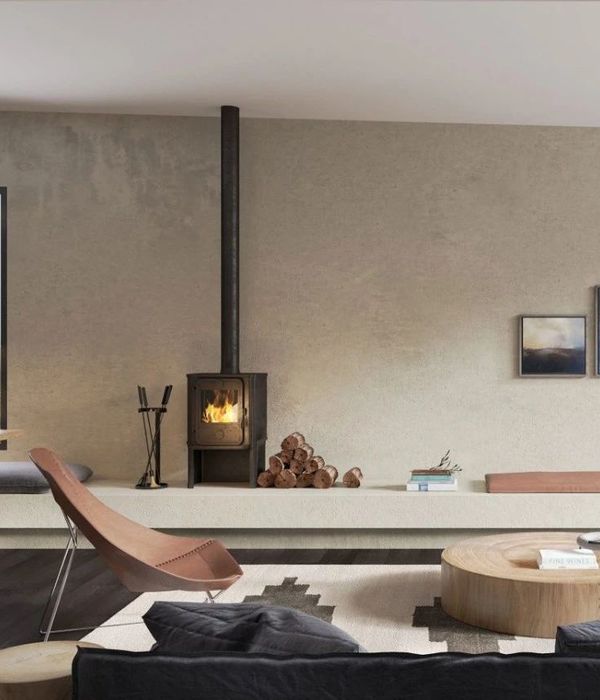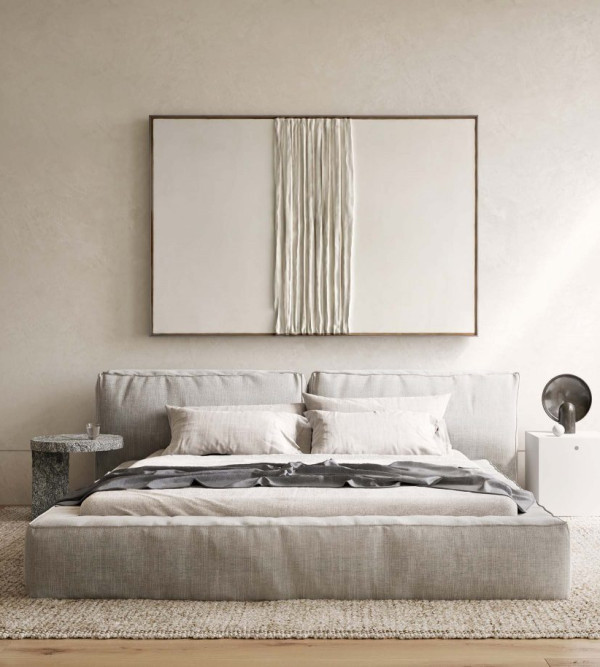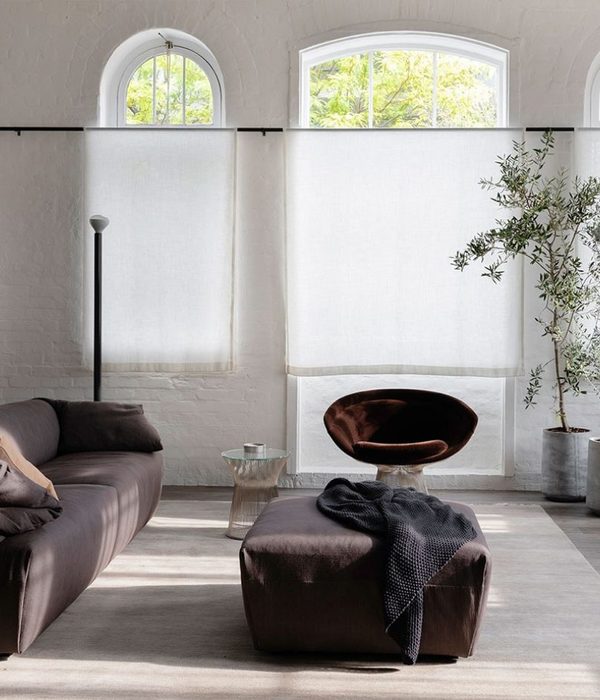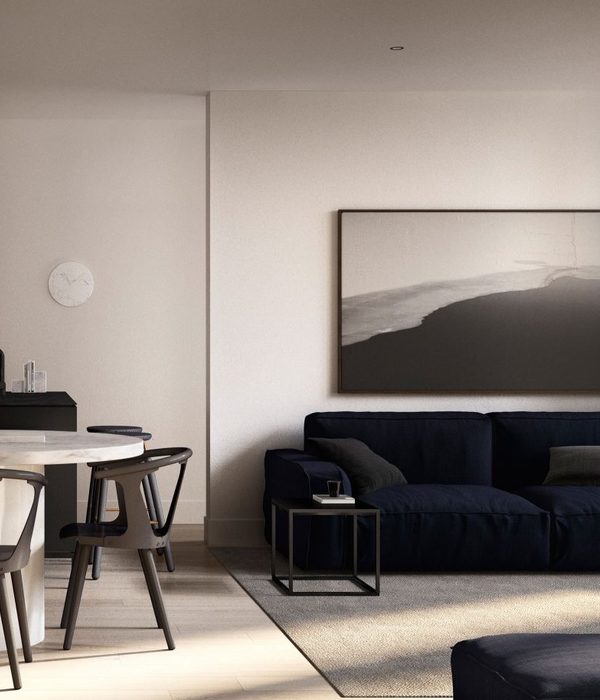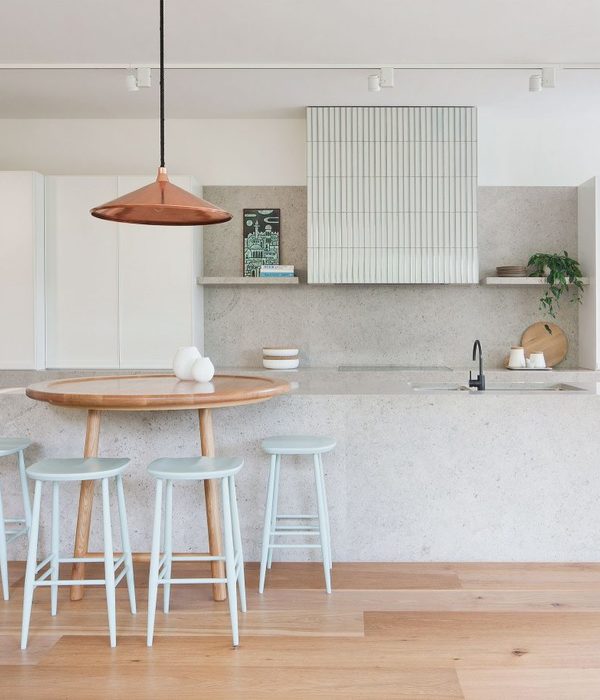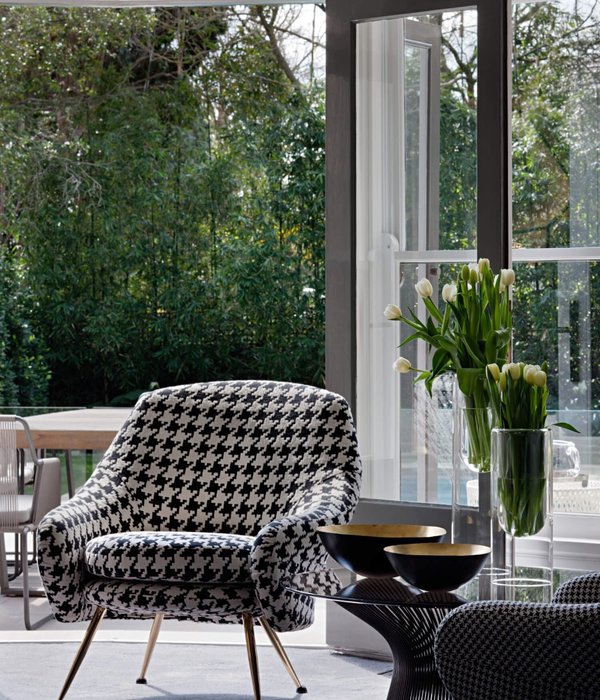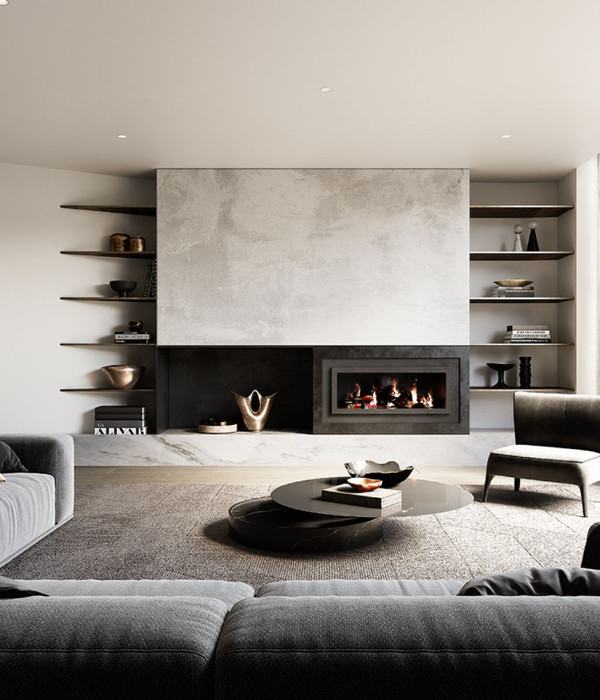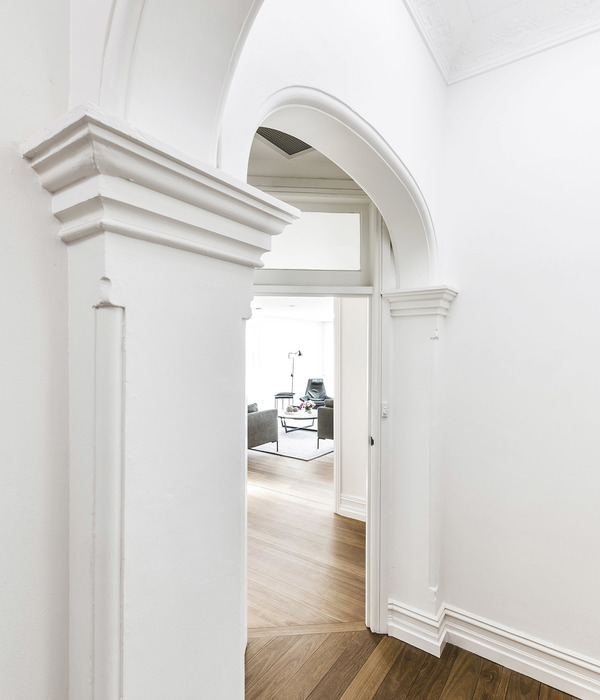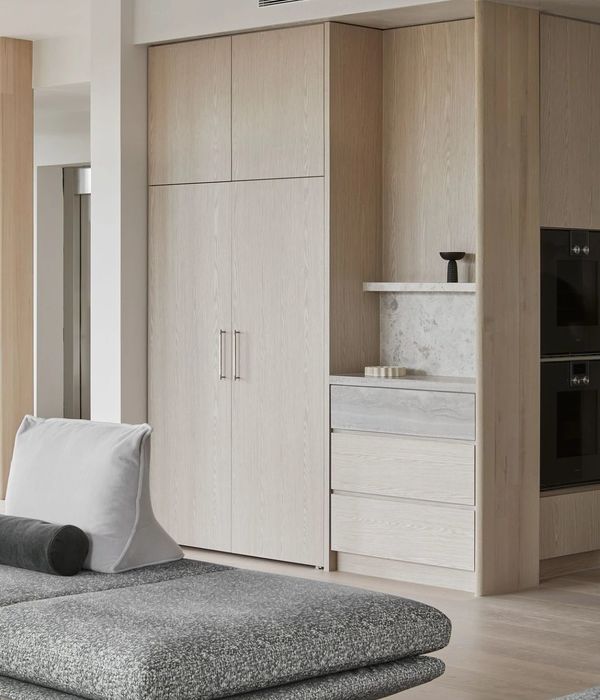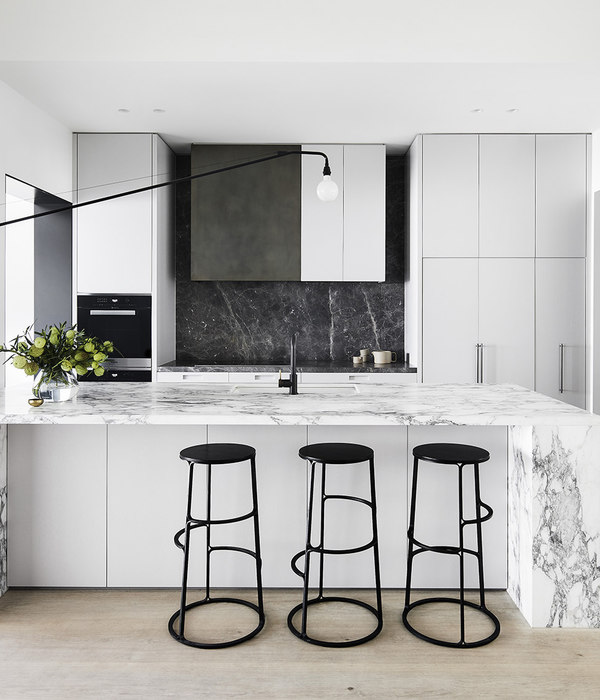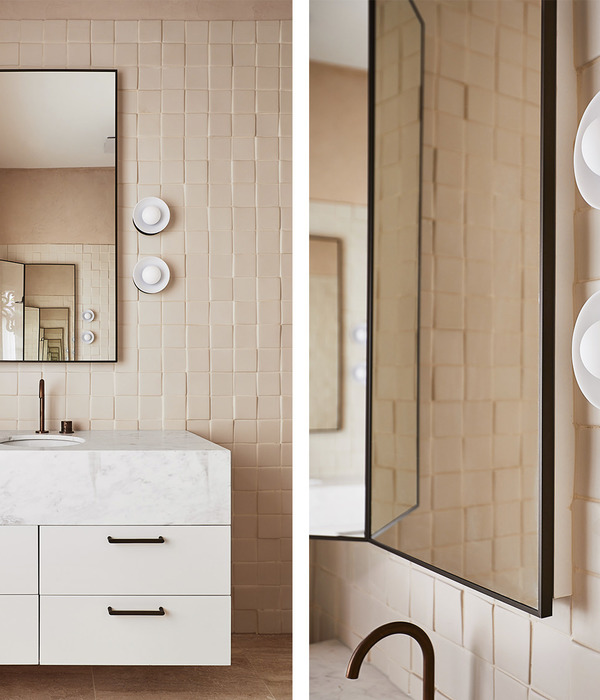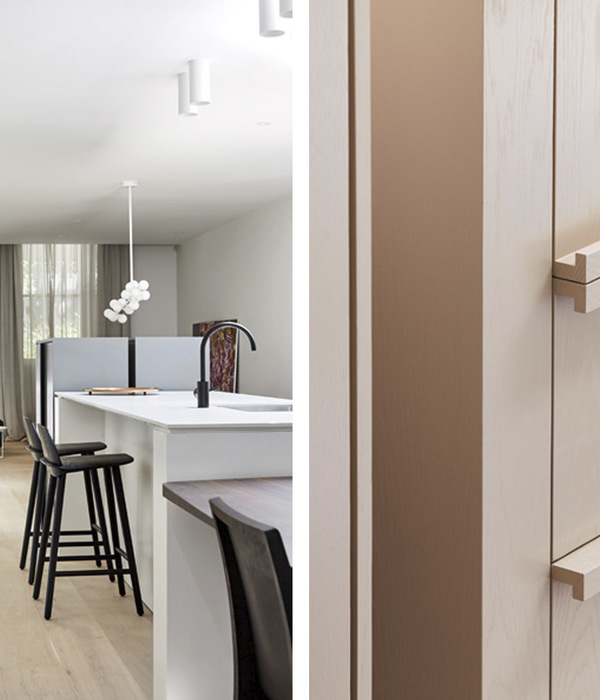- 设计师:Jun Igarashi Architects
- 地点:日本磐城
- 面积:120.0平方米
- 项目年份:2017
- 照片:Satoshi Shigeta
来自
Jun Igarashi Architects
.
Appreciation towards
Jun Igarashi Architects
for providing the following description:
设计师成长于寒冷气候的环境中,并一直在家乡做着设计。设计概念源自设计师Jun Igarashi对于“中间区域”(如套廊、阳光房)的思考。他将入口前厅作为出发点。在人们的认知中,入口前厅是从室内到室外之间的空间。这与阿尔瓦·阿尔托筑针对欧洲北部严峻的自然环境而做的设计类似。人们从内部感受外部空间气息。入口前厅在寒冷的地区是很常见的,它是一个具有保护作用的中间区域,在冬季防止冷空气进入室内。传统的入口前厅非常狭窄,且造价便宜。它附着在建筑之外。虽然它对改善室内环境起着重要的作用,但它的外观和空间都很难让人满意。设计师希望将它设计成一个更愉悦的空间。
I was born and grew in cold climates and continued design while living there, so I began thinking about the middle area. I started thinking and practicing about the middle area (‘engawa’, sunroom etc.) with the airlock entrance as a trigger. It is a space “between” the human consciousness from the inner space to the outer space. This resembles the process of Alva Aalto architecture, which was built against the Northern European severity of nature. People put themselves in the inner space, feeling the outer space from there, and touching it. The airlock entrance was made in cold district as a “middle area to protect” architecture that prevents cold air from flowing outside into the room during the winter season. Conventional airlock entrance is very narrow and cheap; it is installed to stick to the building. It plays an important role to improve the indoor environment, but its appearance and space are very sad. I thought that I wanted to treat it as a more enjoyable existence.
▼项目一览,project overview
设计师私宅的入口前厅跟他孩子的房间一样大。从这里产生了分区的概念:室内室外之间产生了一种距离感。到了夏天,在这个“用于保护的中间区域”会有很多活动。因此相比于从外到内,这更多是一种从内部到外部的“之间”的空间意识。现在我在考虑一个“不仅仅用于保护的中间区域”。人们可以在任何情况下都使用这样一个中间区域,无论是从内到外还是从外到内去理解“之间”的方式。该项目中设计师将建筑放在了场地的中心。场地位于郊区一个有限制的住宅区域,项目预算有限,且楼的占地面积较小,所以这样的布局也是一种合理的选择。虽然住宅四周的环境有些许不同,但总的来说它的四个方向上紧邻的区域都是空地。当从内部向空地(外部)设计时,人在空地上的感觉似乎很重要。设计师试图在两个方向上创造“之间”:他设计的巨大屋檐从内部延伸出来,成为内部结构的基础,同时从外部看使得住宅好似一个要塞。
In my private house, we ordinarily made the airlock entrance slightly installed at the entrance as big as the children’s room. Then, vicinity was born there, a good sense of distance was created between the outside and the inside. In the space designed as “a middle area to protect”, indoor activities will overflow in the summer. It was the “between” space consciousness towards the outside from the inside, it was not “between” from the outside to the inside. Now, I am considering the possibility of “a middle area not only to protect”. It is to aim not only the severity of winter but also the middle area where you can enjoy all the conditions by thinking about the way of “between” from both inside and outside. In this plan, we placed a building in the center of the site. This is one option when setting a small footprint architecture in a limited residential section of a rural district, with limited conditions including cost. Although some hierarchy occurs depending on the direction and the neighboring state, “vacant lands” are born equally to the four sides of the building. When designing from the inside towards the vacant land (outside), the feeling of the person in the vacant land seemed important. I attempted to create a “between” from both directions that would not only be a large eaves as a base from the inside but also as a stronghold of humans from the outside.
▼巨大的屋檐成为住宅的标志性外观,the large eave becomes a signature of the house
设计概念里有四个矩形,形成四个区域。第一个区域在建筑中央,最为稳定。第二个在其周围,有一半在地下。它从入口前厅开始,是一个经过设计师深思熟虑的连续的空间。第三个矩形就是那个超大的屋檐,而第四个矩形则是兼备多个功能的空地。建筑是一种存在,从外界(土地)变化无常的状态中获得某种稳定状态。入口前厅是对某一特定情况的回应。设计师通过扩建和改造对入口前厅做了多种设计。从内外两个方向上产生的“之间”是一个更自由的概念,不会限制中间区域的功能。在这个能够尽情舒展胳膊的优雅空间里人们可以进行各式各样的活动。这里成了一个更大的中间区域。在这个设计中,中间区域不仅服务于环境,也为人们的带来愉悦。
There are “four areas” in “four rectangles”. The first rectangle in the center of the building is the space in the most stable state. The second one is a semi-underground rectangle surrounding it, which is a thought and continuity space from the airlock entrance. The rectangle of the third large eaves beneath space and the rectangle of the fourth vacant land were designed as a multipurpose area, so I decided not to limit the function inside this area. Architecture is an existence born to obtain certain kind of stable state from the fickle state of the outside (earth). The airlock entrance is a response to a certain limited situation. I have made various designs while changing it and enlarging it. It is important that “between” from two-way is freer and does not limit the function. The elegant space under which the arms spread widely becomes a place of various activities of human beings and is full of possibilities to become a large middle area. The middle area dose not only responses to the environment but also response to human pleasures.
▼最稳定的首个矩形是住宅的中央区域,the most stable central area is the first rectangle
▼第二个矩形围绕中央矩形一周,成为浴室,厨房和书房;the second rectangle surrounds the first one and becomes a continuous space that contains bath, kitchen and study
▼从二层俯瞰中央空间,overlook the central area from the second floor
▼二层的开放式空间,the open space on the second floor
▼二层的走道空间,the walk space between the central void and the rooms along the sides
▼二层空间一览,封闭的木屋中是铺有榻榻米的卧室和衣橱;overview of the second floor with enclosed wooden tatami rooms that serves as bedrooms and wardrobes
▼项目夜景,project at night
▼首层有一部分位于地面以下,part of the first floor is underground
▼场地平面,the site plan
▼首层平面,the first floor plan
▼二层平面,the second floor plan
建筑师:Jun Igarashi建筑事务所
地点:日本磐城
面积:120.0平方米
项目年份:2017
照片:Satoshi Shigeta
Architects: Jun Igarashi Architects
Location: Iwaki, Japan
Area: 120.0 m2
Project Year: 2017
Photographs: Satoshi Shigeta
{{item.text_origin}}

